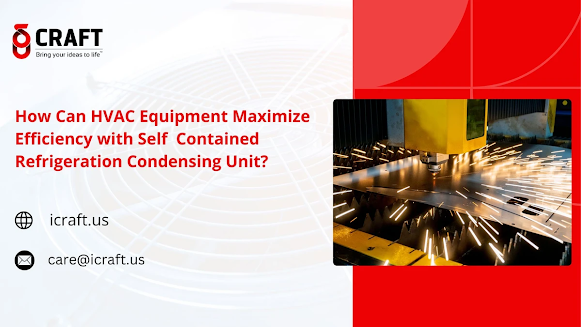How Can HVAC Equipment Maximize Efficiency with Self-Contained Refrigeration Condensing Unit?
In the ever-evolving world of HVAC (Heating, Ventilation, and Air Conditioning), efficiency is a top priority for manufacturers. Energy conservation, cost reduction, and environmental sustainability are driving forces behind the ongoing innovations in the industry. One of the key elements in HVAC systems that significantly impact efficiency is the refrigeration condensing unit. Manufacturers are constantly seeking ways to maximize efficiency, and one solution that has gained prominence in recent years is the self-contained refrigeration condensing unit.
Understanding the Self-Contained Refrigeration Condensing Unit
To fully comprehend how HVAC equipment manufacturers can leverage self-contained refrigeration condensing units for enhanced efficiency, it's crucial to define what these units are. A self-contained refrigeration condensing unit is a compact, all-in-one assembly that includes components such as a compressor, condenser, fan, and refrigeration circuit. Unlike traditional split systems, where these components are installed separately, the self-contained unit combines them into a single, easy-to-install package.
Benefits of Self-Contained Units
Improving Efficiency with Self-Contained Units
HVAC equipment manufacturers can take several steps to maximize efficiency when incorporating self-contained refrigeration condensing units into their systems:
Eco-Friendly Solutions
In addition to boosting efficiency, HVAC equipment manufacturers can contribute to environmental sustainability by incorporating self-contained refrigeration condensing units into their systems. These units often use environmentally friendly refrigerants with lower global warming potential (GWP). By using these units, manufacturers can help reduce the overall environmental impact of HVAC systems and align with global efforts to combat climate change.
Conclusion
Efficiency is the cornerstone of modern HVAC systems. Self-contained refrigeration condensing units offer a powerful tool for HVAC equipment manufacturers to achieve this goal. These units provide reduced energy consumption, space-saving design, streamlined installation, and enhanced reliability.
Manufacturers can further enhance efficiency by right-sizing units, incorporating variable speed compressors, optimizing airflow, and promoting regular maintenance. By embracing self-contained units and their eco-friendly features, manufacturers can not only meet the demands of a more environmentally conscious market but also position themselves as leaders in the industry. In this era of rapid technological advancements and growing environmental concerns, self-contained refrigeration condensing units represent a key solution for the future of efficient and sustainable HVAC systems.

.png)

.png)
Comments
Post a Comment